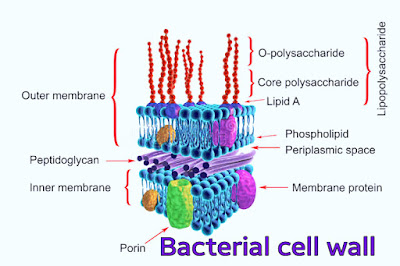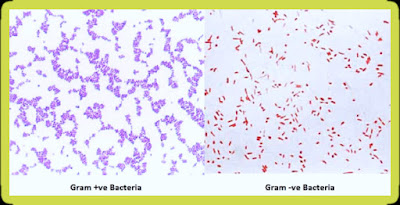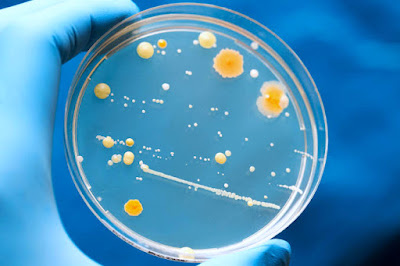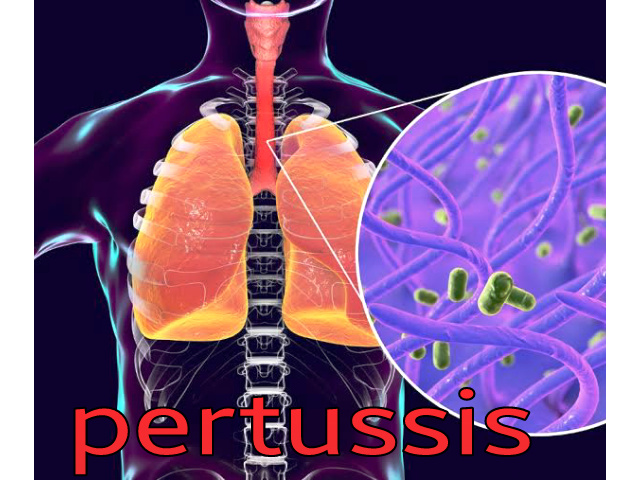What is a Bacteria in hindi:-
Bacteria in hindi :- Bacteria जंतु जगत सबसे छोटे micro-organism होते है। जो लगभग सभी स्थानों पर पाए जाते हैं।Bacteria बहुत ही सूक्ष्म आकार के होते हैं जिन्हें Microscope के द्वारा देखा जा सकता है।अधिकांश Bacteria infection द्वारा विभिन्न प्रकार की disease spread करते हैं।-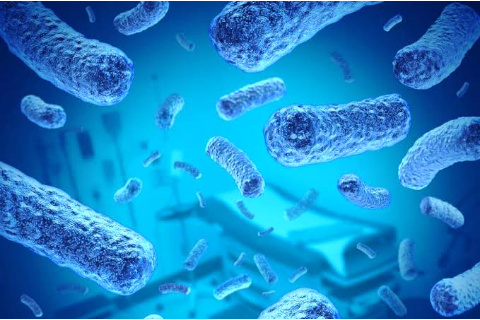
Bacteria defination in hindi :-
Bacteria अति सूक्ष्म आकार के Unicellular organism होते हैं जो संरचना की दृष्टि से prokaryotic होते हैं और अधिकांशत स्थितियों में मनुष्य एवं अन्य जीवो में कई प्रकार की Disease उत्पन्न करते हैं। Bacteria prokaryotic संरचना वाले होते हैं इस आधार पर यह कहा जा सकता है कि बैक्टीरिया बहुत प्राचीनतम जीव है।विज्ञान की वह शाखा(Branch) जिसके अंतर्गत Bacteria की structure, growth, nutrition एवं अन्य charector का अध्ययन किया जाता है Bacteriology कहलाती है।
History of Bacteria- in hindi :-
Antoni van Leeuwenhoek को Bacteriology का जनक माना जाता है। इन्होंने सन 1676 मेंं Bacteria की खोज की और इन्हें Animalcules नाम दिया था। इसके लिए इन्होंंने single lens microscope का use किया था
Bacteriology के अंतर्गत Bacteria के अध्ययन के लिए bacteria culture किया जाता है और उनकी संख्या में वृद्धि करके उनकी विभिन्न जातियों का अध्ययन किया जाता है। जिससे कि different types की disease का treatment किया जाता है।
Bacterial cell structure :-
(Bacteria cell) Bacteria संरचना के आधार पर primitive या prokaryotic होते हैं। बैक्टीरिया लगभग 0.3 से 14 माइक्रोन तक की लंबाई के हो सकते हैं
Bacteria अति सूक्ष्म(micro_structure) के होते हैं इसी कारण उनको हम Nacked eye के द्वारा नहीं देख सकते हैं।
Bacteria को देखने के लिए Microscope आवश्यकता होती है। Bacterial cell की संरचना देखने पर बहुत ही simple लगती है परंतु Electron microscope की help से देखने पर एक Bacterial cell की structure को निम्नलिखित दो parts में divide किया जा सकता है -
1. internal structure of bacteria :-
एक सामान्य Bacteria की internal structure में कुछ इस प्रकार की संरचनायें दिखाई देता है-
Cytoplasm :-
यह Bacterial cell का अधिकांश भाग बनाता है जिसमें अन्य cell-organeles बिखरे रहते हैं।यह Bacterial cell का मुख्य पदार्थ होता है।Cytoplasm में Bacterial cells की अधिकांश क्रियाएं संपन्न होती हैं।
Genetic material :-
Bacterial cell का Genetic material Nucleoid के रूप में व्यवस्थित होता है जिसके अंदर chromosomes होते हैं क्योंकि Bacteria primitive होते है इसीलिए Bacteria's में nucleus नाही पाया जाता है।
Ribosomes :-
Bacterial cell में Ribosomes के granules cytoplasm में पर्याप्त मात्रा में पाए जाते हैं।जो कि Bacteria के लिए आवश्यक proteins का निर्माण करते हैं।. इसके अतिरिक्त एक Bacterial cell की internal structure में अन्य structures भी पाई जाती हैं जैसे कि endospores, plasmids, cell membrane, and vacuoles etc.
2. External structure of bacteria :-
Bacteria की External structure के अंतर्गत मुख्य रूप से निम्न तीन structures आती हैं-
Flagelleum :-
यह Bateria की External structure की एक important structure होती है यह लगभग fibers के समान thin एवं long उभार होते हैं जो कि एक tail की तरह कार्य करते हैं जिससे Bacteria को movement करने में आसानी होती है।
Capsule :-
Bacterial Capsule ,polysacharide की बनी एक Hard structure होती है जो कि Bacteria के चारों तरफ एक layer के रूप में पाई जाती है और उसे outer shocks एवं factors से बचाती है।
Pilli / fibrine :-
Pilli Bacteria के छोटे-छोटे hair shaped होते हैं जो hard होते हैं Bacteria के movement में कोई help नही करते है। यह Bacteria, pilli की help से host cells से जुड़ जाता है।
Bacteria cell wall structure :-
प्रत्येक Bacteria की cell चारों तरफ़ से एक hard layer से घिरी हुई रहती है जो बहुत strong होती है यह layer bacteria की cell wall कहलाती है।
इसके साथ ही यह cell wall बाहरी antigens इत्यादि की reaction के लिए स्थान उपलब्ध कराती है। जैसा कि हम जानते हैं कि bacteria antibiotics से damage हो जाते है और antibiotics bacteria की growth को prevent करती है।
परंतु antibiotics के लगातार use करने से कुछ bacteria पर antibiotics का effect नही होता हैं अर्थात यह bacteria antibiotic restrictions developed कर चुके है।
इस प्रकार के bacteria के लिए अब हमें antibiocs का कोई दूसरा विकल्प discover करना होगा । इस संबंध में scientist research कर रहे है और कुछ हद तक वे successभी हुए है।
Morphology of bacteria,s :-
Bacterial Structure कई प्रकार की होती है-cellular morphology के आधार पर Bacteria को अलग अलग नाम दिए जाते हैं। morphology के आधार पर Bacteria को 5 भागों में विभाजित किया जा सकता है-


A. Coccus / Cooci Type Bacteria :-
जो Bacteria संरचना में गोलाकार(rounded) या अंडाकार (oval shaped) होते हैं उन्हें cocci कहा जाता है।जब इस प्रकार के bacteria, singal state में पाए जाते हैं तब उन्हें coccus कहा जाता है और जब वह group में पाए जाते हैं उनको coccus कहा जाता है।इनका normal size लगभग 0.5to 1μm तक होता है ।इन Bacteria को उनकी उपस्थिति के आधार पर निम्नलिखित 6 parts में बांटा गया है-
- Monococcus
- Diplococcus
- Streptococcus
- Staphylococcus
- Tetrad
- Cuboid coccus etc.
B. Bacillus / Bacilli Type Bacteria:-
वह Bacteria जो संरचना की दृष्टि से बेलना कार या rode shape के होते हैं Bacilli या Bacillus कहलाते हैं। इनका normal size लगभग 0.5 to 1μm तक होता है । इन Bacteria को भी cells की संख्या के आधार पर निम्न चार parts में divide किया जा सकता है- - Monobacillus
- Diplobacillus
- Streptobacillus
- Palisade
C. Vibrio Type Bacteria :-
Vibrio, word का use Bacteria के लिए किया जाता है जो मुड़े हुए लगभग कोमा के समान structure वाले होते हैं। इन Bacteria में एकflagellum पाया जाता है जिसकी help से यह Bacteria, movement करते हैं।इनका normal size लगभग 0.5 से 3μm तक होता है।
D. spirilla Type Bacteria :-
यह Bacteria कई स्थानों पर बड़े मुड़े हुए structure वाले होते हैं और आकार में screw के समान दिखाई देते हैं। इनका normal size लगभग 5 to 8 μm तक होता है।
E. Filamentous type Bacteria:-
यह Bacteria, Branches के रूप में पाय जाते हैं इन्हें Actinomysis भी कहा जाता है। इनका diameter लगभग 1.5μm तक होता है You are reading now Bacteria in hindi
How many types of Bacteria:-
Bacteria को कई प्रकार से divide किया जा सकता है। structure के आधार पर यह पांच प्रकार के होते हैं, इसके अतिरिक्त इन्हें इनके special charectersticks, functions तथा अन्य तथ्यों के आधार पर अनेक प्रकार से divids किया गया है-
Pathogenicity के आधार पर बैक्टीरिया निम्नलिखित दो प्रकार के होते हैं-
1. pathogenic Bacteria:-
वह Bacteria जो infection व अन्य माध्यम से humans व अन्य organism में कई type की disease करते हैं pathogenic Bacteria कहलाते हैं।जैसे कि salmonella typhi जो कि typhoid disease उत्पन्न करता है और clostridium tetanae जो कि tetanus disease उत्पन्न करता है।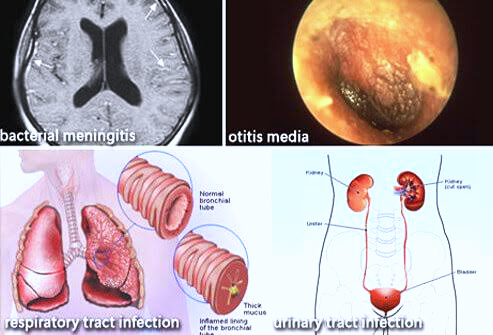

2. Non-pathogenic Bacteria:-
वह Bacteria जो जीवो में disease उत्पन्न नहीं करते और उन्हें किसी प्रकार से नुकसान नहीं पहुंचाते Non-pathogenic Bacteria कहलाते हैं।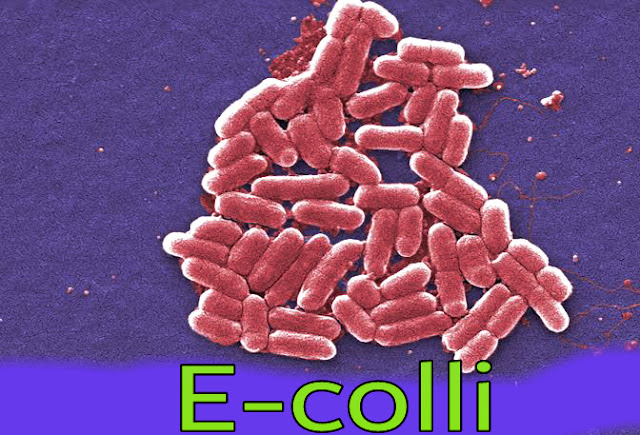

इस प्रकार के Bacteria का use दैनिक जीवन में विभिन्न कार्यों के लिए किया जाता है जैसे कि Lactobacilli bacteria का dairy products में किया जाता है। ठीक इसी प्रकार E-colli, animals की intestine में पाया जाता है और food के diagestion में help करता है।
Growth के लिए ऑक्सीजन की present एवं absent के आधार पर Bacteria दो प्रकार के होते हैं-
1. Aerobic Bacteria:-
इस प्रकार के Bacteria ऑक्सीजन की present में ही growth कर सकते हैं। इस प्रकार के Bacteria मुख्य रूप से घावो (wound) की surface पर पाए जाते है-
2. Anaerobic Bacteria:-
इस प्रकार के Bacteria ऑक्सीजन की absent में growth कर सकते हैं। इसके अतिरिक्त कुछ bacteria ऐसे भी होते हैं जो ऑक्सीजन की present एवं absent दोनों conditions में growth कर सकते हैं ऐसे bacterias को facultative anarobic bacteria कहा जाता है।
Bacteria s को उनके लिए आवश्यक medium के आधार पर दो भागों में बांटा जा सकता है-
1. Acidophilic Bacteria:-
वह Bacteria जिनकी growth के लिए acitic medium आवश्यक होता है या जो acitic medium में अच्छे से growth करते हैं Acidophilic Bacteria कहलाते हैं। इनकी growth के लिए P.H.7.0 से कम होना चाहिए।
2. Basophilic Bacteria:-
वह Bacteria जो 7.0 से ज्यादा P.H. वाले Medium में growth करते हैं अर्थात Alkaline medium में growth करते हैं Basophilic Bacteria कहलाते हैं-
Grams Stain:-
सन 1884 के लगभग Hans christin Gram नामक वैज्ञानिक ने एक staining method, invent किया जिसके आधार पर इन्होंने समस्त Bacteria को दो बड़े groups में बाँटा गया है-
A. Gram-positive Bacteria:-
वह Bacteria जो Gram,s Stain के द्वारा stain होते हैं Gram positive Bacteria कहलाते हैं। यह Bacteria, Gram s stain के द्वारा purple colour से stain होते हैं।इनकी Cell wall thick होती है और अधिकतर peptidoglycan से बनी होती है। Gram positive Bacteria की cell wall penicline के प्रति अधिक sensetive होती है।
B. Gram-Negative Bacteria:-
वह Bacteria जो Gram,s Stain के द्वारा stain नहीं होते या red colour से stain होते हैं Gram negative bacteria कहलाते हैं।इनकी cell wall thin होती है जिसमें lipid अधिक मात्रा में पाया जाता है। Gram negative bacteria की cell wall, peniciline के प्रति कम sensetive होती है।
What is Bacterial growth factors:-
कई ऐसे factors होते हैं जो Bacterial की growth को प्रभावित करते हैं Bacterial growth को सामान्य रूप से effect करने वाले कुछ मुख्य factors इस प्रकार हैं-
1. Food of Bacteria:-
एक normal cell की तरह ही,Bacterial cell की normal growth के लिए मुख्य रूप से carbon, nitrogen और in-organic salts की आवश्यकता होती है।
2. Moisture:-
Environmental moisture, Bacteria की growth को काफी हद तक effect करता है।Moisture में Bacteriaआसानी से growth कर सकते हैं जबकि air dry हो जाने पर Bacteria damage हो जाते हैं।
3.Temperature:-
Bacteria की normal growth के लिए 25 से 40°C तक का temperature आवश्यक होता है परंतु nature में स्वतंत्र रूप से पाए जाने वाले Bacteria के लिए 30°C और parasite के रूप में पाए जाने वाले Bacteria के लिए 37°C तक का temperature आवश्यक होता है।
4. Light (sunlight):-
light भी Bacteria की growth को effect करती है। अधिकतर Bacteria अंधेरे में अच्छी growth करते हैं और इसके विपरीत sun light में नष्ट हो जाते हैं। कुछ Bacteria जो कि जंगल में पाए जाते हैं sun light में pigmentation उत्पन्न करते हैं ।
5.Oxygen for Bacterial growth:-
अधिकांश Bacteria, Oxygen की present में growth करते हैं और disease के फैलाने में सक्षम होते हैं ऐसे Bacteria को aerobic Bacteria कहा जाता है। कुछ Bacteria ऐसे होते हैं जिनको Growth के लिए Oxygen की आवश्यकता नहीं होती ऐसे Bacteria, anaerobic Bacteria कहलाते हैं।
परंतु कुछ ऐसे bacteria भी होते हैं जो Oxygen की present और absent दोनों में growth कर सकते हैं ऐसे Bacteria, Facultative anaerobic Bacteria कहलाते हैं।
6. Carbon-dioxide for Bacterial growth:-
Bacteria की ग्रोथ के लिए environment में present, Corbon-di-oxide की सूक्ष्म मात्रा ही काफी होती है। परंतु कुछ Bacteria को Corbon-di-oxide की अधिक मात्रा की आवश्यकता होती है ऐसे Bacteria को microphilic Bacteria कहा जाता है।
7.P.H.:-
Bacteria की growth को medium भी effect करता है जो bacteria, alkaline medium में growth करते हैं उन्हें Basophilic Bacteria कहा जाता है और जो Bacteria, Acitic medium में growth करते हैं या जिनकी growth के लिए acitic medium आवश्यक होता है Acidophilic Bacteria कहलाते हैं।
What is Replication of Bacteria (Bacterial cell division) :-
Bacteria अपनी संख्या में वृद्धि या replication Binary division के द्वारा करते हैं। यह एक incomplete, cell division होता है जिसमें एक Bacterial cell पूरी तरह से develop हो जाती है तब वह divide होकर एक अन्य cell का निर्माण करती है।
इस प्रकार का cell division, Binary fusion कहलाता है जो केवल prokaryotic cells में होता है।
Cell division के बारे में अधिक जानने के लिए यहां click करे
How to get Nutrition of Bacteria:-
सभी living cells की तरह Bacteria को भी जीवित रहने के लिए nutrients substance की आवश्यकता होती है जिनके द्वारा Bacteria energy प्राप्त करते हैं।
सामान्य रूप से bacteria अपने nutrition के लिए निम्नलिखित methods का use करते हैं-
- Photosynthesis
- Decomposition
- Chemotrops
- Mutualism
- Parasitism
Photosynthesis procces in Bacteria:-
Photosynthesis के रूप में Bacteria, co2 और water की help से glucose और Oxygen का निर्माण करते हैं। जिसमें से glucose का use Bacteria, food की तरह करते हैं और energy प्राप्त करते हैं।
इस प्रकार phosynthesis करने वाले Bacteria के example के रूप में साइनोबैक्टीरिया ( cynobacteria )को ले सकते हैं जिन्हें Blue-green Algae भी कहा जाता है।
Decomposition by Bacteria:-
Bacteria, decomposisor के रूप में भी जाने जाते हैं। इस प्रकार के Bacteria waste materials और dead organism को और अन्य छोटे molecules में decompose कर देते हैं और उनके organic substances का breakdown करके energy, nitrogen और carbon इत्यादि प्राप्त करते हैं।
Chemotropic Bacteria:-
Chemotrops Bacteria, type के bacteria Chemical compounds का breakdown कर energy प्राप्त करते हैं। जैसे कि nitrogen का breakdown करके bacteria energy produce करते हैं।
Mutualism process of Bacteria:-
इस प्रकार के bacteria जीवित रहने के लिए अन्य micro-organism और plants पर depend रहते हैं और उनसे relation बनाए रखते हैं। जैसे कि कुछ bacteria कई plants की roots में पाए जाते हैं यह bacteria, plants की roots से आवश्यक nutrients प्राप्त करते हैं एवं nitrogen का निर्माण करते हैं। इस प्रकार के relations में bacteria एवं plants दोनों को benfit होता है।
Parasitism of Bacteria's:-
इस प्रकार के bacteria अपने nutrition के लिए दूसरे जीवो पर depend रहते हैं और उसको नुकसान पहुंचाते हैं। यह bacteria parasites के रूप में जाने जाते हैं। इस प्रकार के bacteria कई प्रकार की dangerous disease उत्पन्न करते है।
Some disease caused by bacteria:-
Bacterial infection in humans- Bacteria infection के द्वारा humans एवं अन्य जीवों कई प्रकार की disease उत्पन्न करते हैं। bacteria के द्वारा होने वाली कुछ disease इस प्रकार से है-
Leprosy Disease( bacterial infection on skin ):-
यह एक skin disease होती है जो कि Microbacterium lepry, Bacteria के कारण होती है इसे कोढ़ भी कहा जाता है।
इस disease में skin में फोले बनते है और बाद में उनसे घाव (wounds) बन जाते है।
Bacterial pneumonia disease :-
Pneumonia एक lung disease होती है जो diplococcus pneumonae ( pneumonia bacteria ) के कारण होती है।
इस disease में lungs की alveoli में mucus जमा होने लगता है जिससे breathing में कठिनाई महसूस होने लगती है। Bacteria के अतिरिक्त pneumonia कई अन्य कारणों से भी हो सकता है।
Tetanus Disease:-
यह एक Bacterial disease होती है जो कि clostridium tetanus ( bacteria of tetanus ) के कारण होती है। चोट अन्य किसी कारणों के द्वारा body में enter कर जाता है और tetanus नामक disease उत्पन्न करता है जिसमें body में paralysis होने लगता है और body bend हो जाती है।

इसे धनुषतंबा रोग भी कहते हैं क्योंकि इसमें body धनुष के आकार में मुड जाती है।इससे बचने के लिए बचपन में बच्चों को D.P.T.(Diphtheria, pertussis,Tetanus) का टीका (tetanus vaccine) लगाया जाता है। इसके अलावा चोट लग जाने के बाद भी tetanus shot दिया जाता है।

इसे धनुषतंबा रोग भी कहते हैं क्योंकि इसमें body धनुष के आकार में मुड जाती है।इससे बचने के लिए बचपन में बच्चों को D.P.T.(Diphtheria, pertussis,Tetanus) का टीका (tetanus vaccine) लगाया जाता है। इसके अलावा चोट लग जाने के बाद भी tetanus shot दिया जाता है।
T.B. Disease:-
यह एक lung disease होती है जो Microbacterium tuberculosis , bacteria के कारण होती है। इसे तपेदिक रोग भी कहा जाता है।
इसमे lungs की alveoli damage होने लगती है। T.B. का Treatment DOTS method के द्वारा किया जाता है।
Pertussis Disease:-
यह भी एक Bacterial disease होती है जिसे whooping cough भी कहते है।
यह disease Boerdetell pertussis (Pertussis bacteria ) के कारण होती है। इसके लिए D.P.T. का vaccine लगाया जाता है।
यह disease Boerdetell pertussis (Pertussis bacteria ) के कारण होती है। इसके लिए D.P.T. का vaccine लगाया जाता है।
Bacterial veginosis :-
यह एक genital disease होती है मुख्य रूप से womens में होती है। यह disease BV ( Bacterial Veginosis) के vegina में infection होने के कारण होती है।
इसे gardnerella veginalis भी कहते है।
Bacterial meningitis :-
हमारे Brain और spinal coard की membrane में Bacterial infection के कारण swelling ( inflammation ) उत्पन्न हो जाती है जिसे meningitis कहते है।
यह disease मुख्य रूप से Neisseriae meningitidis ( Meningitis Bacteria ) के कारण होती है ।
Summary:-Bacteria in hindi
Bacteria in hindi:-. Bacteria जंतु जगत सबसे छोटे micro-organism होते है। जो लगभग सभी स्थानों पर पाए जाते हैं। जो Structural view से prokaryotic होते हैं और अधिकांशत स्थितियों में मनुष्य एवं अन्य जीवो में कई प्रकार की Disease उत्पन्न करते हैं। Bacteria लगभग 0.3 से 14 माइक्रोन तक की लंबाई के हो सकते हैं।Bacteria अपनी संख्या में वृद्धि यार replication Binary fusion के द्वारा करते हैं ।यह एक incomplete cell division होता है।
How much bacteria is on your phone :-
हम जिस mobile phone को दिनभर use करते है उस पर बहुत से Bacteria present रहते है क्योंकि हम अपने phone को हर टाइम छूते है और use करते है। अपने हाथों को तो हम सब wash कर लेते है but mobile का क्या ??
एक research के according हमारे mobile phone पर लगभग 17,0000 Bacteria active रहते है।
Tags:
Microbiology



